Overcome Performance Anxiety: 4 Practical Sessions for Climbers
To look at how we might overcome performance anxiety in a climbing setting, as well as explore practical sessions to include in our training, we first need to look a little deeper and find out more about – anxiety.
What is anxiety?
In essence, anxiety is when you experience worrying thoughts or feel afraid. However, it’s important to recognise that there are different types of anxiety that can affect different people in different ways.
Broadly speaking, anxiety falls into these two categories:
- State Anxiety – This comes as a response to a threatening event or stimuli and is experienced by everybody in day-to-day life. The effects are generally short-lived. In climbing, this might be a feeling of performance pressure before having a redpoint attempt or feeling afraid to commit to a move.
- Trait Anxiety – This is associated with personality and is more long-lived. This type of anxiety is not necessarily related to a particular stressor or situation. For example, some people may be predisposed to mental health conditions, such as social anxiety disorder, where social interactions can elicit feelings of intense self-consciousness, nausea and lightheadedness.
If you think that your experiences of anxiety are more akin to Trait Anxiety than State Anxiety, then this is something that your GP or family physician can help you with and there are a number of excellent International Mental Health Charities that offer valuable support and advice.
However, if your anxiety symptoms are related to performance pressure and the fear of failure, or anticipation of success, then keep reading to find 4 practical sessions that might come in handy.
When climbers are asked to describe how they experience State Anxiety when they are climbing they usually describe symptoms that fall into the following 3 categories:
- Cognitive Anxiety
This is when you start to have negative thoughts in response to a threatening or stressful situation, which has a negative impact on sporting performance. You may have these thoughts:
“I keep forgetting my beta.”
“I get really upset, because I feel scared.”
“I get easily distracted by things.
2. Somatic Anxiety
This is your physical reaction to a threatening or stressful situation. Somatic Anxiety can positively influence sporting performance to a certain extent. However, if you push the limit, it can become detrimental to performance. Being able to recognise the symptoms of Somatic Anxiety and when that individualised tipping point may arise, is a useful tool for improved sporting performance. You may have these feelings:
“I can’t help, but overgrip.”
“My legs start shaking.”
“I can feel my heart facing.”
3. Self-Confidence and Lack of Self-Confidence
Self-confidence is having the belief that you have the skills needed to complete the task when faced with a threatening or stressful situation, which has a positive impact on sporting performance. By contrast you may also experience a lack of self-confidence which may present in the following ways:
“Negative words and phrases start to creep in.”
“I catastrophize and start to imagine things going wrong.”
“Self doubt. I feel like I’m not good enough to do the climb.”
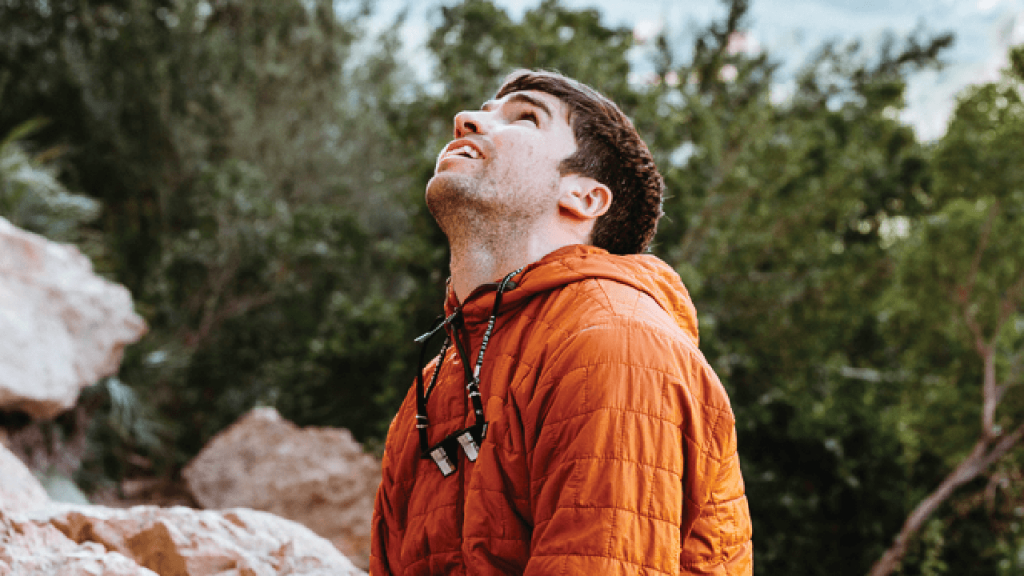
Using these categories is a useful way of trying to improve the specificity of any interventions that we decide to employ by taking a targeted approach. Have a go at doing this yourself. Write a list of some of the symptoms that you experience and have a go at placing them into the three categories:
- Cognitive Anxiety
- Somatic Anxiety
- Self-Confidence
What is actually happening and why does anxiety impact my performance?
When you experience State Anxiety, this impairs the brain’s key functions and negatively influences the mental skills required for performance. One of these mental skills is your ability to maintain concentration (Attentional Control) and to direct your attention to stimuli that may be beneficial in helping you to complete a task or achieve a goal. These are called task-relevant stimuli. Unfortunately, the negative effects of anxiety are felt most acutely in tasks that involve the core functions of the central executive, which is responsible for directing our attention towards stimuli that are helpful when trying to complete a task or achieve a goal. These core functions are:
Inhibition is your ability to inhibit, or resist, distraction by task-irrelevant stimuli or stimuli that may threaten your chances of completing the task or achieving the goal. For example, when climbing, this would mean being able to block out the distraction of the fear of failure during a redpoint attempt.
Shifting is your ability to dynamically shift or manoeuvre your attention between stimuli, in order to decide what is (or isn’t) useful, in your pursuit of completing the task or achieving your goal. In climbing, this may be the ability to shift your attention from trying to clip the chains at the top of the route to figuring out or trying to remember your hand and foot sequences.
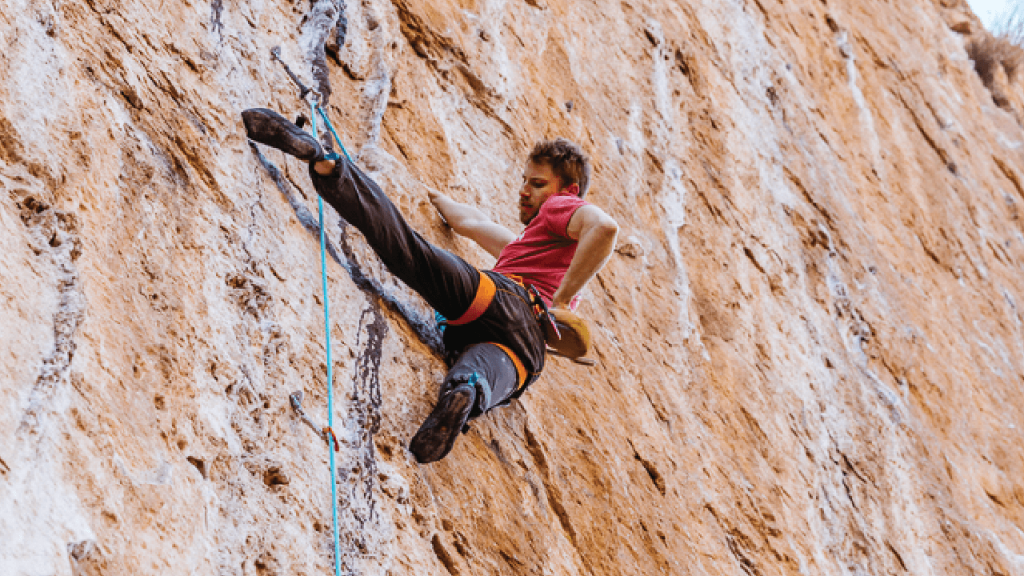
Updating is related to our working memory and the way that we store and manage short-term information. When you’re on a route and you forget your beta, this is likely because your inhibition and shifting have been impaired because of anxiety/performance pressure.
Because anxiety impairs two out of the three core functions, shifting and inhibition, this also negatively impacts our ability to update and not only does anxiety impact the core functions, but also your higher order functions such as emotion regulation and your ability to plan and problem solve. In climbing, all of these functions play a significant role in effective or successful climbing performance. The good news is that this is something that you can work on in your training and your coaches have worked together to compile this set of 4 sessions that could be used to improve your ability to maintain Attentional Control and perform well when faced with performance pressure or State Anxiety.
4 Session Ideas
Session 1: Tactical Session – Boulder/Route Onsighting Session
Working at or around your flash grade, aim to onsight as many boulders as possible within a restricted 1 hour time frame. To increase the pressure, you could simulate a friendly competition format and compete against your climbing peers. This session will provide you with exposure to performance pressure so that you can acclimate to these conditions and develop a further understanding of how to reduce Somatic Anxiety and regulate your emotions.
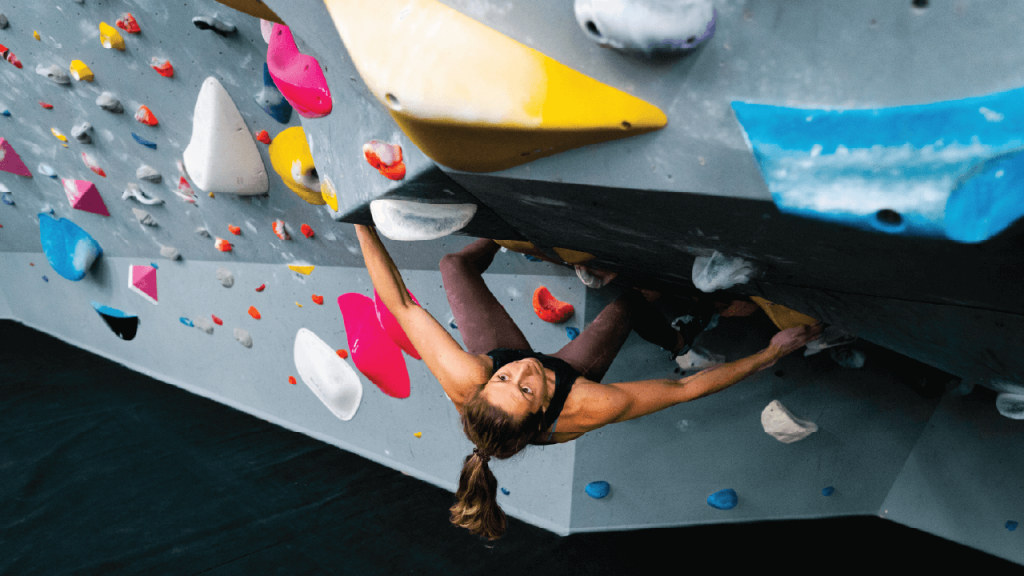
Practise different breathing strategies to help figure out what works best for you. Experimenting with your breathing during a high-pressure session will help to simulate the impact that anxiety could have physically and psychologically. Here are two suggestions, but there are lots of alternative options:
- Belly Breathing (or Diaphragmatic Breathing) -Ideally this will be done before a flash attempt whilst you are sitting or lying down and with your hands resting on your belly.
- With your mouth closed, breathe in slowly and deeply through your nose.
- As you inhale, aim to fill/inflate your belly with air. You should feel your hand being lifted as your belly fills.
- Slowly release the air through partially closed, or pursed, lips. You should start to feel your hand lower as the air is released.
- Box Breathing (or Square Breathing or 4, 4, 4, 4) -This can be done before/during a flash attempt, especially when the climb offers a suitable resting position. This is a particularly useful strategy when you find yourself being distracted by your inner dialogue, “You won’t be able to do it.” or “Don’t slip now, you’ve almost made it!” Aim to equalise the duration of breaths in and breaths out.
- Initially, tune into your breaths as they are. If you feel your chest rising, but not your belly, then it is likely that your breaths are shallow and your oxygen/carbon dioxide balance may be disrupted.
- Regulate your breathing by breathing in slowly through your nose for four seconds.
- Now hold your breath for four seconds.
- Breathe out slowly through your mouth for four seconds.
- Finally, hold your breath for a further 4 seconds.
Session 2: Psychological Session – Boulder Triples
Using five hard boulders that you can climb in full and that you are familiar with, complete triple repetitions of each boulder with five minutes rest between sets.
Practise implementing a number of pre-performance routines that may offer a welcome distraction from your thoughts, help to focus attention and serve to improve your self-confidence prior to each rep/set. Completing this session using physically demanding climbing will help to simulate the feelings of performance pressure that you may experience on a project attempt and will help to prevent the negative impact that Cognitive Anxiety could have on performance. Here are a few suggestions:
- Visualisation and Beta Review
You could also consider this to be a mental rehearsal of the climb you’re about to attempt.
- Without looking at the climb, run through the hand and foot sequences in your mind. Consider which hand you will use on each hold, what the grip type is, which direction the hold is facing and how this will impact your body positioning, which muscles you may need to engage and how hard you will need to try to effectively execute each individual move.
- Improve the effectiveness of this exercise by using physical visualisation. This requires you to manoeuvre your limbs and engage or contract the relevant muscles as you mentally proceed through the moves.
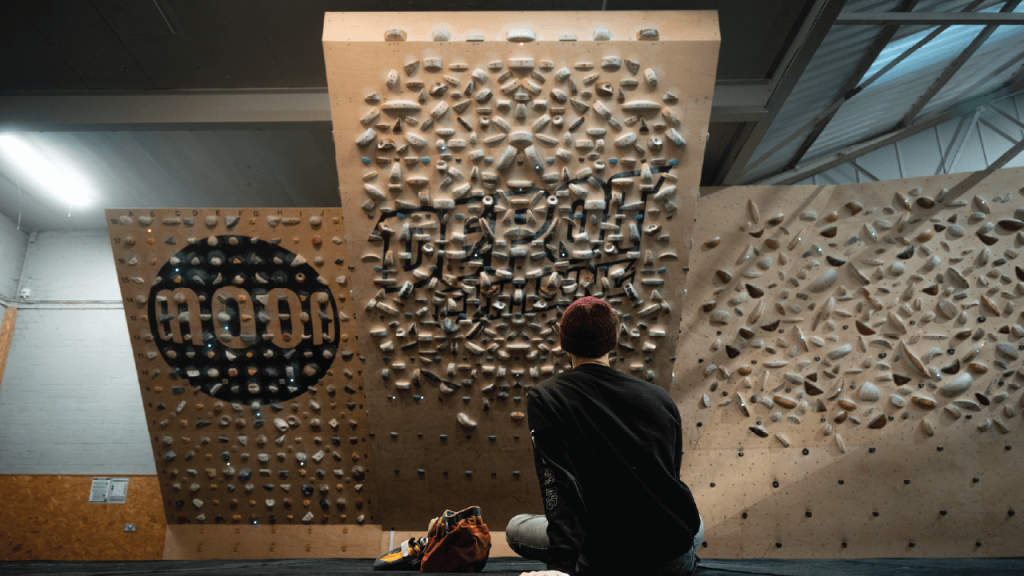
- Brush Holds, Apply Liquid Chalk, Clean Shoes
Not only can these strategies literally help you with your performance, but they can also help you to eliminate any doubt by directly addressing some of the risk factors. If you take a systematic approach then you know that you’ve done everything in your power to prepare yourself for a successful attempt. That extra peace of mind will also help to ease any of the somatic/physical anxiety that you may be feeling.
Session 3: Technical Session – Efficiency Drills
Break down the individual moves on a boulder that is physically demanding, but that you can climb in full. Review and refine your beta, considering the subtleties of movement and ensuring that the beta you have is sufficient to maximise movement efficiency. This session is a useful tool for increasing self-confidence and helping you to believe that you have the skills required to complete the task or send the climb!
- Are you doing the following?:
- moving with accuracy and precision
- driving through your feet/engaging the muscles of the trunk to reduce tension through the arms
- generating momentum and upwards force through the legs
- Can you avoid the following?:
- matching
- unnecessary foot/hand swaps
- hesitation
- cutting loose
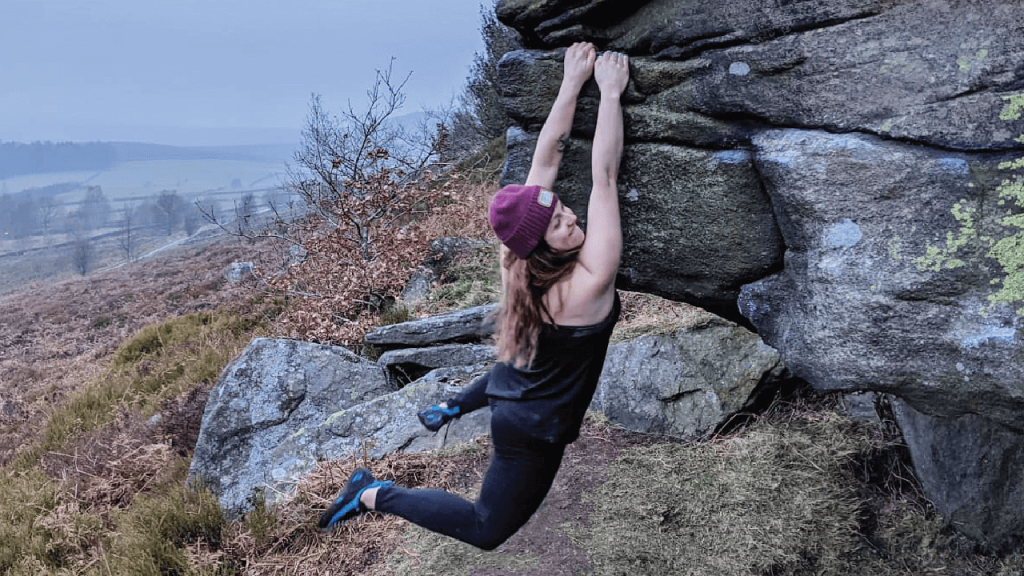
Session 4: Physical Session – Aerobic Training Sessions
Incorporating aerobic sessions into your training will improve your self-confidence as it will give you that extra time on the wall to pause, rationalise any anxious thoughts, regulate your breathing and try to figure out or even visualise the next sequence of moves. This is a valuable session, as it may help you to practise keeping any Somatic Anxiety within a performance enhancing range.
- Build your Pump
- Complete 1 set of pre-fatiguing, low-intensity fingerboard repeaters at around 40% of your total load, using a 20mm edge.
- Shaking out alternative hands will simulate the metabolic demands of climbing.
- Hang for 7 seconds and then shake out your left hand for 3 seconds. This is 1 rep.
- Hang for 7 seconds and then shake out your right hand for 3 seconds.
- Complete 6 reps in total.
- Attempt a route at your regular onsight grade.
- Route Pyramid
- Select 8 routes of varied difficulty from easy to your max redpoint grade.
- For set 1, climb the easiest route, followed by 10 minutes rest between each set.
- Work your way up to the hardest route, which will be set 5.
- Work your way back down the pyramid, concluding with an easy route.For example, a climber with a best redpoint grade of 7b/5.12b and a regular onsight grade of 6c+/5.11b would follow the following structure:
5+ / 5.8
6a+ / 5.10b
6c / 5.11a
7a+ / 5.12a
7b / 12.b
7a / 5.11d
6b+ / 5.10d
6b / 5.10c
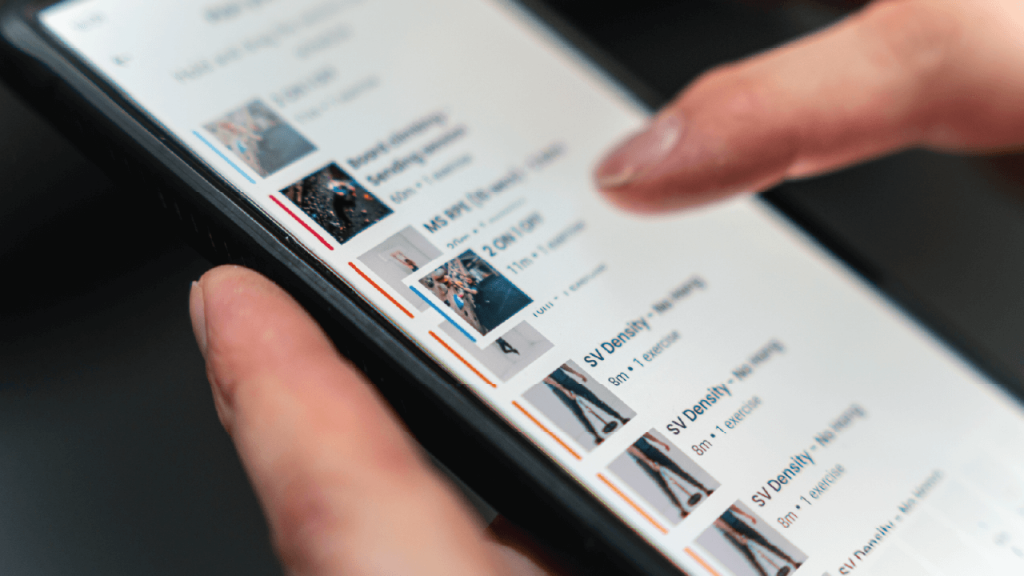
Hopefully, these sessions will provide you with the opportunity to adapt to performing under pressure. The mental challenge that climbing offers is unique and often underestimated. We readily spend time at the gym doing max hangs or weighted pull ups, but neglect to train the psychological aspects of climbing. We must facilitate psychological adaptation in the same way that we would facilitate physiological adaptation, with progressive, gradual loading or exposure.
It’s important to gently push yourself out of your comfort zone, as this will provide a rich and valuable opportunity for learning. Taking a holistic approach to training, whereby both mental and physical components are given equal importance, can not only improve climbing performance, but also the enjoyment of pushing your grade and working towards your climbing goals.
“The only opponent you have to beat is yourself.” -Haruki Murakami
All of these sessions are available on our Performance Coaching Plans. Which also give you access to 1:1 support from a dedicated Performance coach, exclusive access to our Lattice Training app and are always 100% customised so that they suit your goals, facilities, training history and available time.





